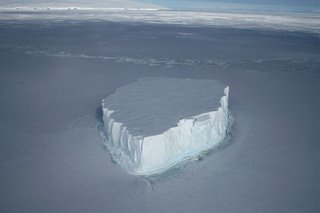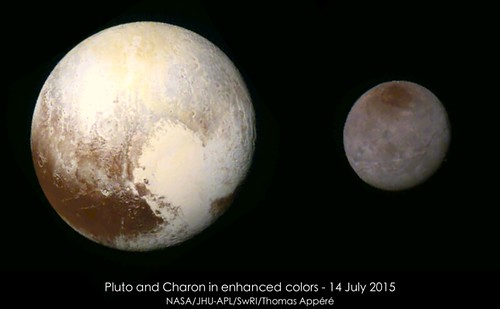QUOTE (neo56 @ Jul 22 2015, 09:58 PM)

My take on the LORRI mosaic and its colorization as a LRGB with the 2x2 color picture. It was not easy to match the two pictures!
Thomas, those images are glorious. How many comparable size areas of Earth have all this crazy terrain?
Thanks Herobrine too. Those hot pixels have already embarrassed me, very helpful.
MarsinMyLifetime, there may be a solution to your problem. The Water ice mountain ranges are located close to the equator and therefore receive sunshine all year round. The beyond 90 degree axil tilt means that the Sun is always in a roughly 120 arc in their Northern sky. The mountain faces facing in this direction are all shiny and crystalline looking, partly because the Sun is clearly shining on that side, and surely this permanent insolation is going to have an impact on the physical appearance. Scalbers suggests a fine sublimation lag of micron sized dust, organics trapped within the ice when it formed and crystals of volatile ices frost. Combined with this is small scale rubble, possibly from small scale thermal stress mass wastage. This mixture creates a sufficiently mobile surface for this face of the mountain to reach the angle of repose. That relatively thin layer, is constantly being refreshed, in comparison to the rest of the surface more thickly covered in organics.
The other faces receive very little sunlight throughout the Plutonian year in comparison, there, faces will experience greater extremes of thermal stress and more, larger, recognisable, sublimation features. With far less disturbance of the surface these areas accumulate a thicker coating of organics and dust, making them darker in appearance, the contrast no doubt, fooling the brain into perceiving the lighter side as slightly brighter too. These faces I would expect to have an appearance similar to the densely consolidated material on 67P, another large chunk of Water ice in a near vacuum.
My initial impression that these ice mountains look very alien to the terrain by their appearance, is replaced by, the Water ice looking alien on a Nitrogen, Methane and Carbon Monoxide ice dominated world. Everywhere else is rounded and smoothed off, indicative of the softer super volatile ices and their fluid flow possibilities.








